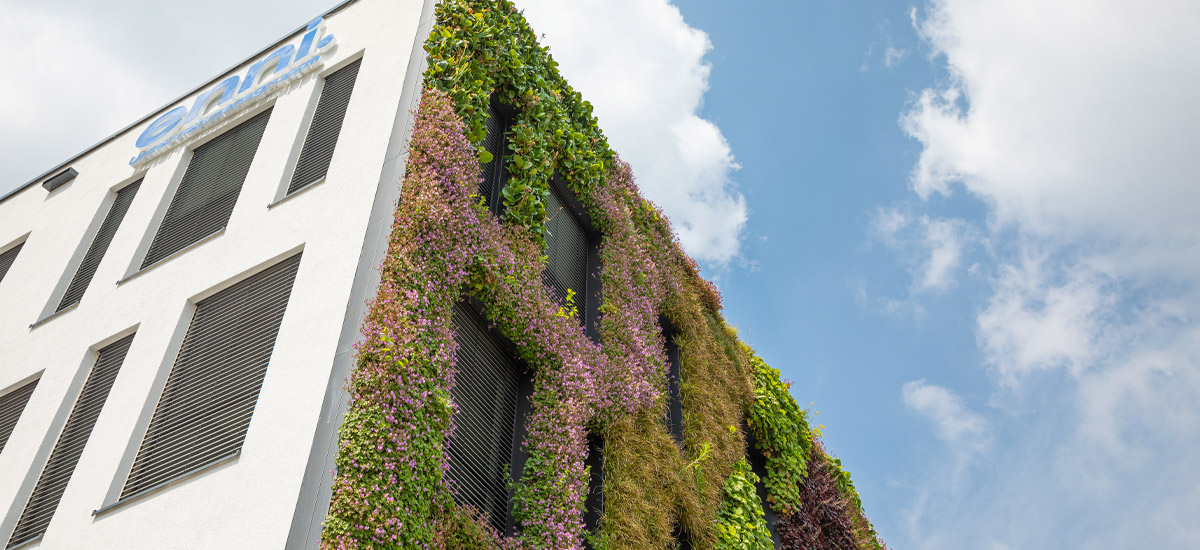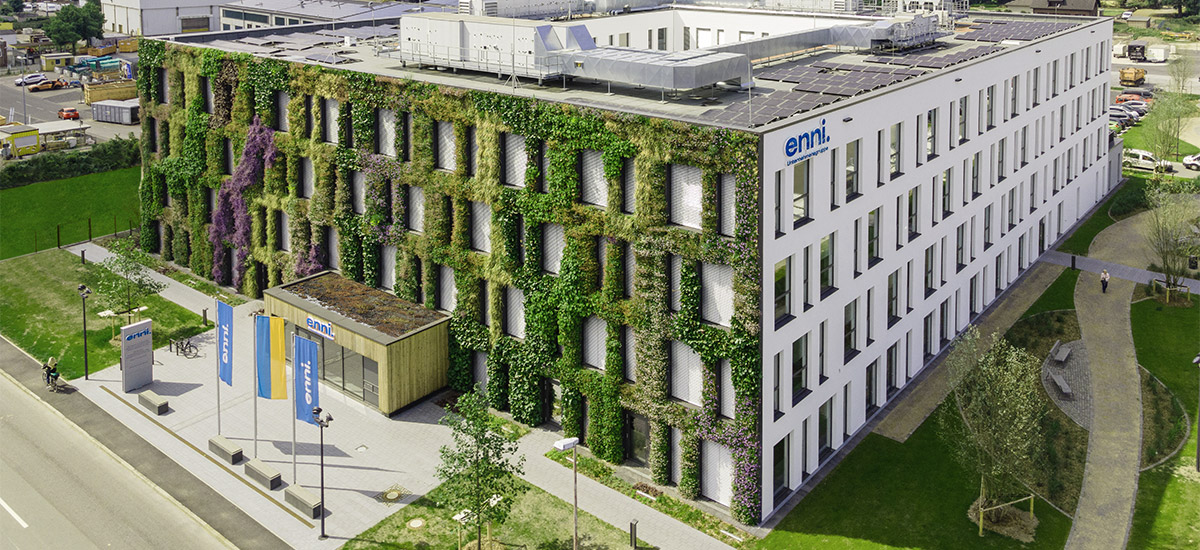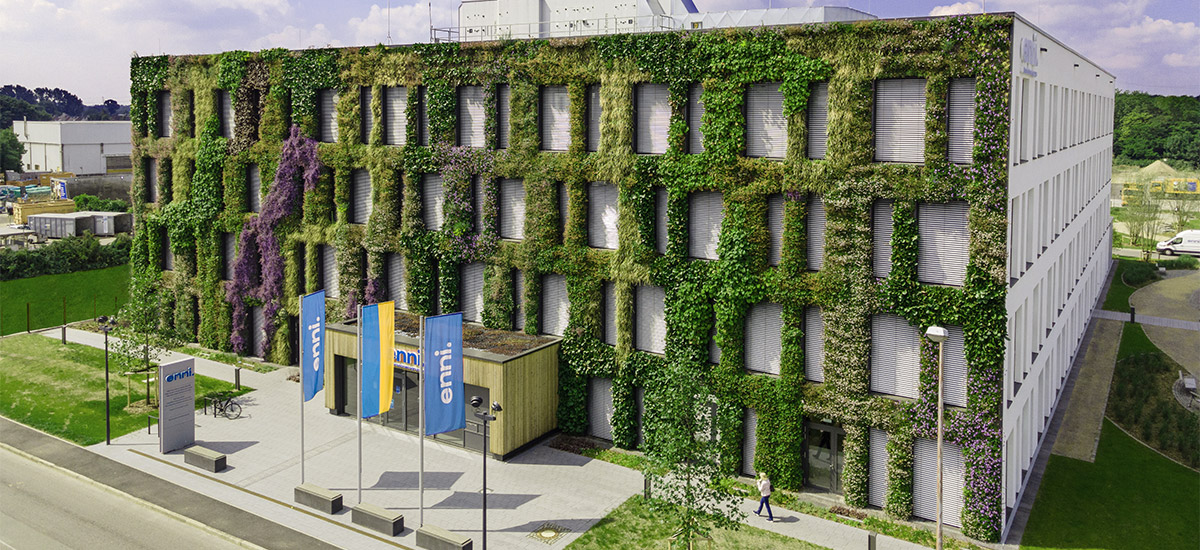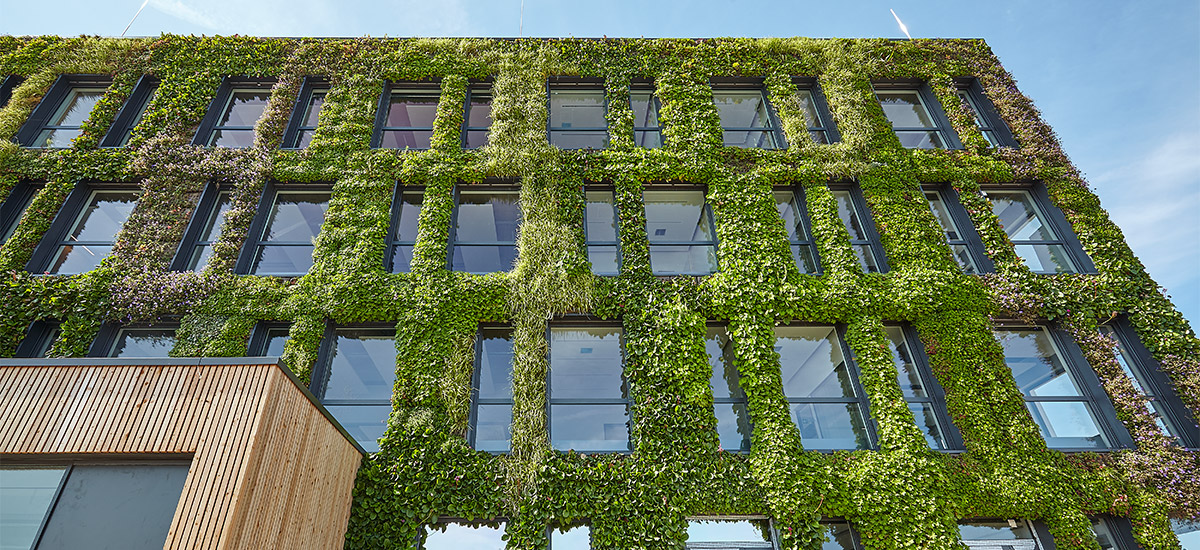In Moers on the Lower Rhine, the new administration building of ENNI Stadt & Service Niederrhein AöR, which was constructed in 2021, is a flagship project in terms of green façades. With an area measuring 600 square metres, the east façade is the largest vertical garden in Germany to date (as of May 2022). The greenery consists of some 56,000 plants held in place by the CROSSFIX® substructure system. The green façade with its colourful interplay of over 30 different flowering shrubs and grasses impressively demonstrates the huge potential that this type of façade design has to offer – both in terms of visual and ecological aspects as well as other positive aspects for the use of the building.
Advantages of a green façade
There is a long list of arguments in favour of green façades. The green spaces capture harmful substances and help to sustainably improve the climate. In urban areas in particular, in which no new planting is feasible due to a lack of space, a vertical green façade offers a flexible option to build green spaces. In summer, vertical greening provides shade for the façade, keeping the interior pleasantly cool, while in winter, it has a heat-insulating effect. In addition, it has a positive effect on sound insulation. The plants absorb noise and provide habitats for small animals and important beneficial insects, which are scarce in city centres. The green façade not only offers advantages from an ecological point of view. The flexible design possibilities for façades are almost endless.System for wall-mounted greening
One common option way of creating a green façade is to use wall-mounted greenery, also known as a living wall, which consists of individual plant materials. A system of this type was used at ENNI in Moers. The advantage of these systems is that the plant pockets are delivered to the construction site pre-planted, and so immediately fulfil the design objectives. App-controlled, state-of-the-art sensor and irrigation technology ensures that the plants receive the care they need at all times. This ecologically valuable high-tech façade requires a robust substructure that satisfies all requirements in terms of building physics, structural integrity, fire protection and compatibility. The CROSSFIX® substructure system is the ideal choice for the installation of wall-mounted greenery. It is made of stainless steel so is extremely low in thermal bridges, has a high load-bearing capacity, is highly fire-resistant and can be used with maximum flexibility thanks to its unique bracket geometry. This enables a wide range of design options and optimum adaptation to structural conditions, such as projections or wall apertures.Detailed information about the CROSSFIX® substructure system is available here.




